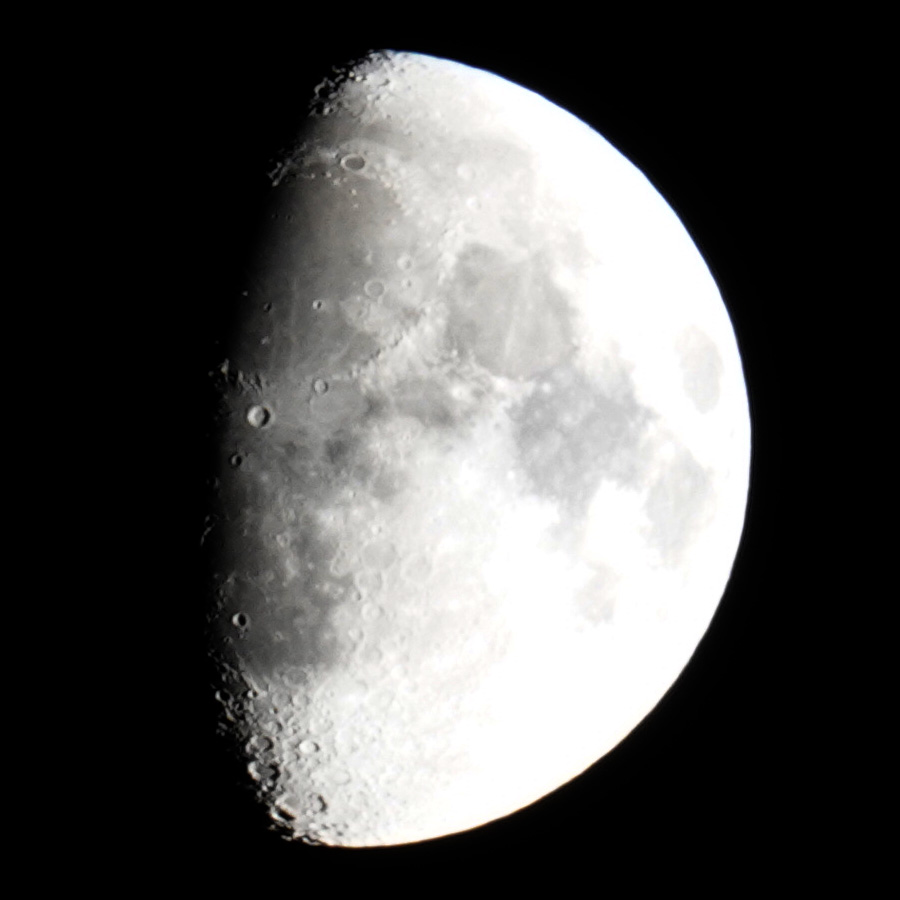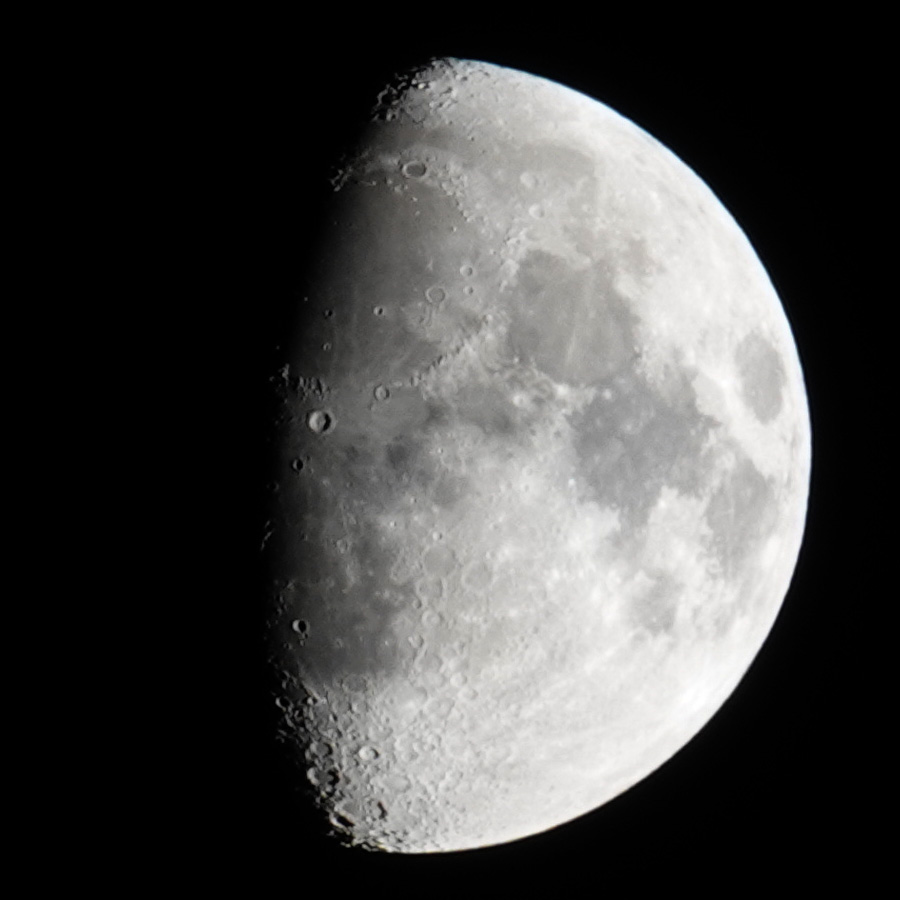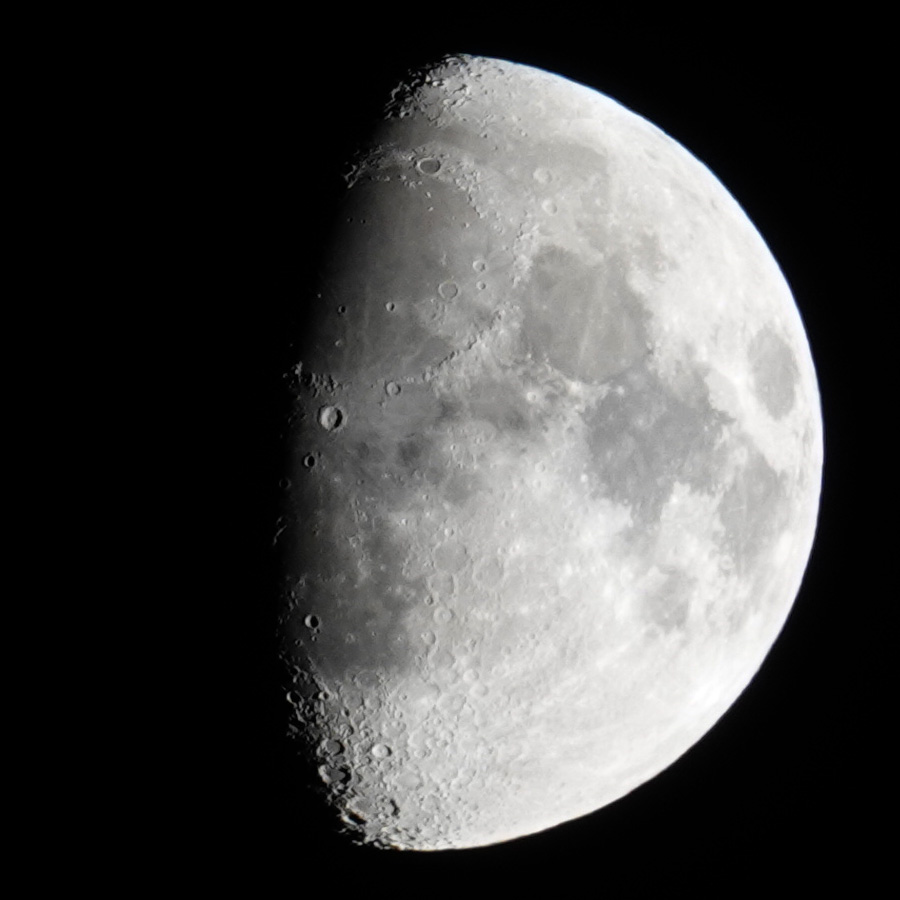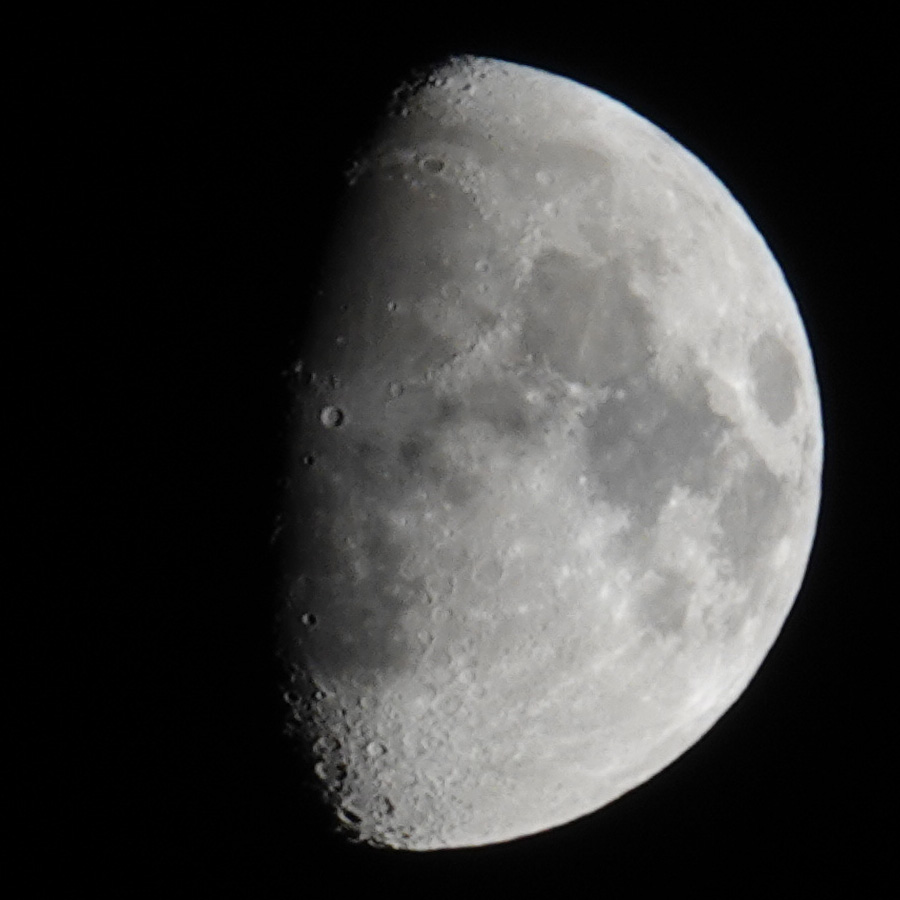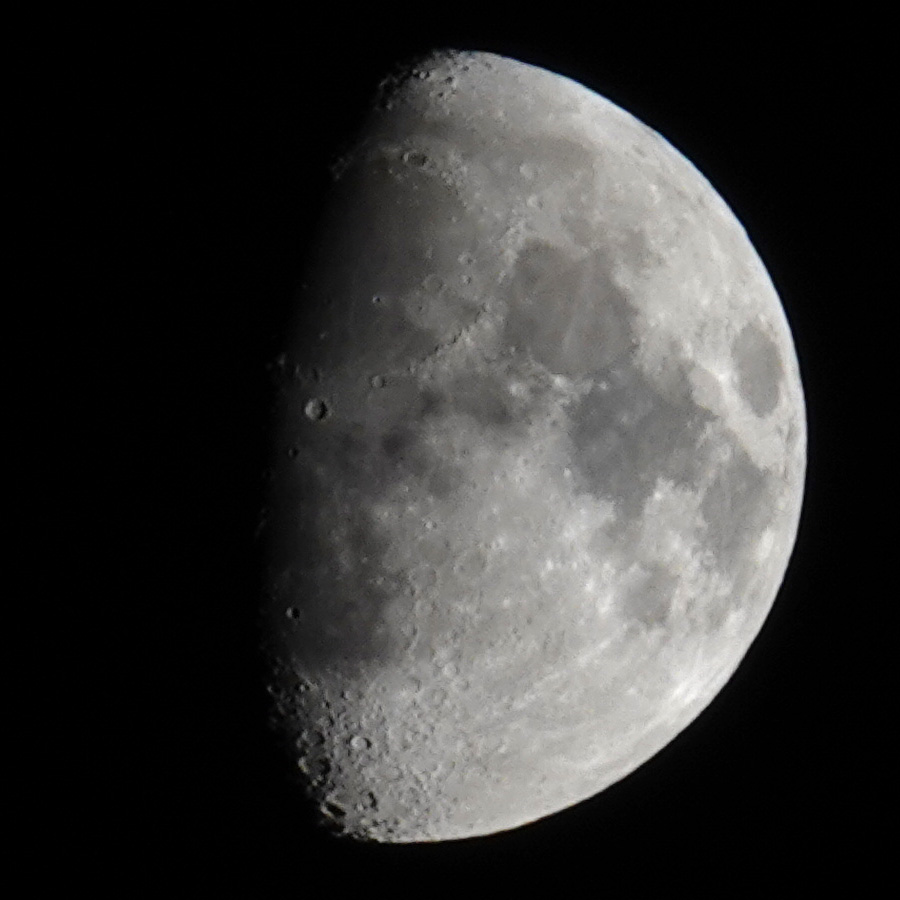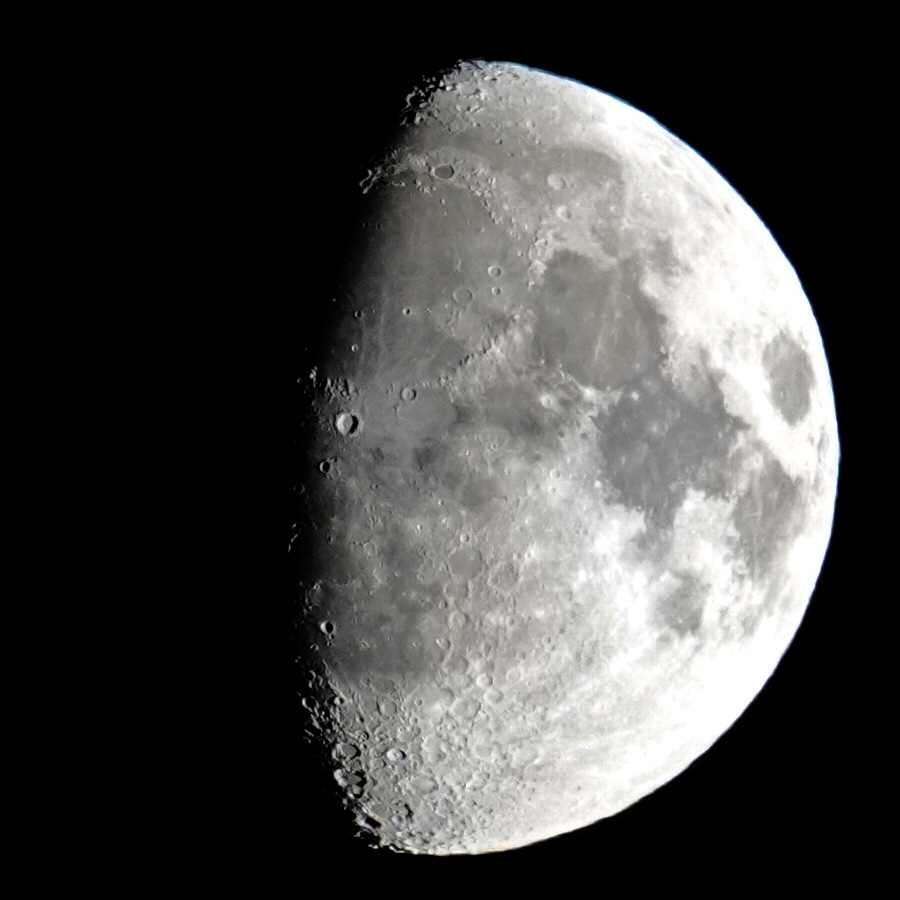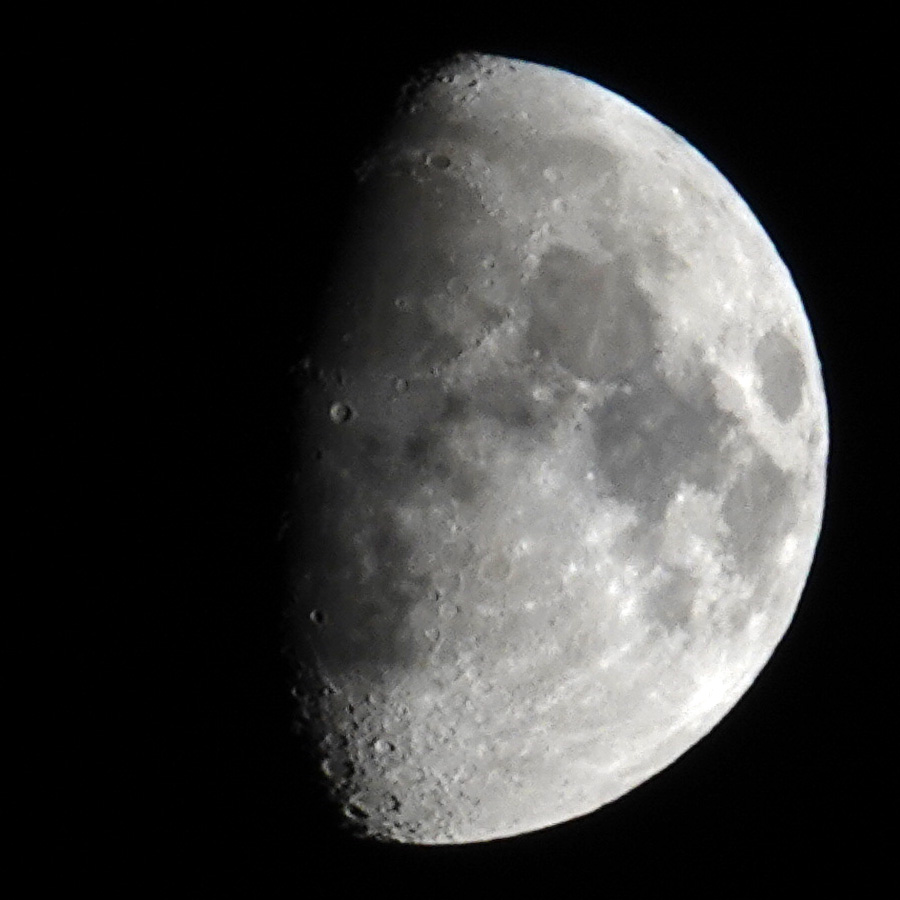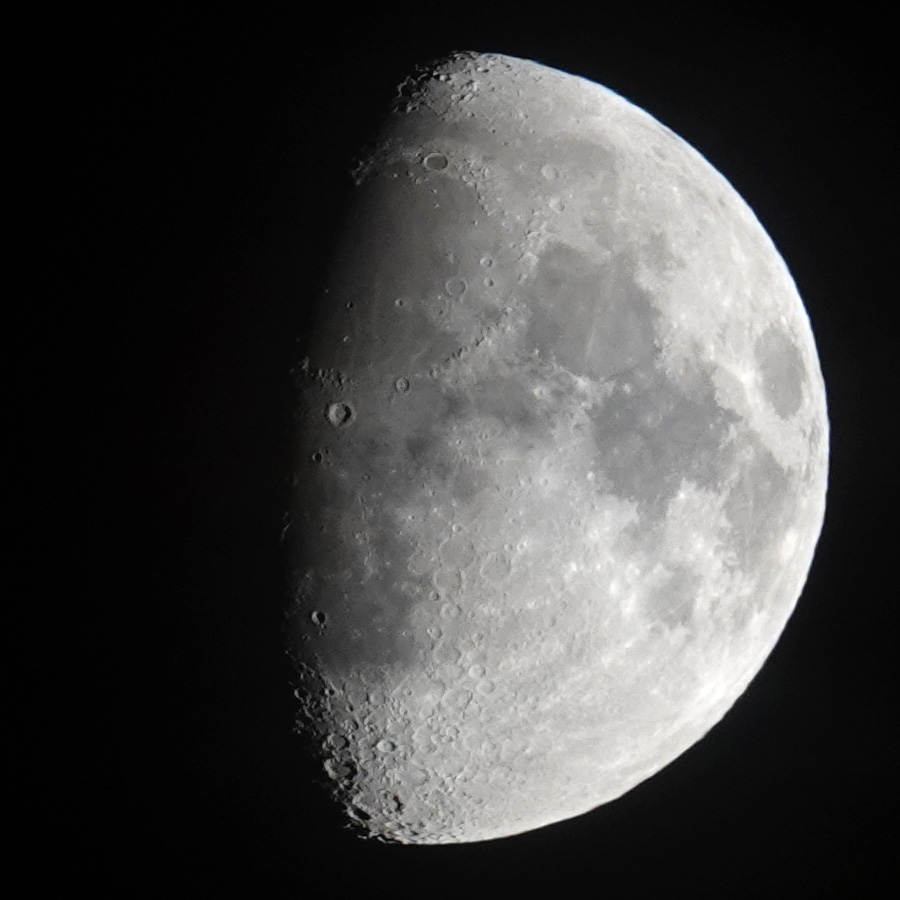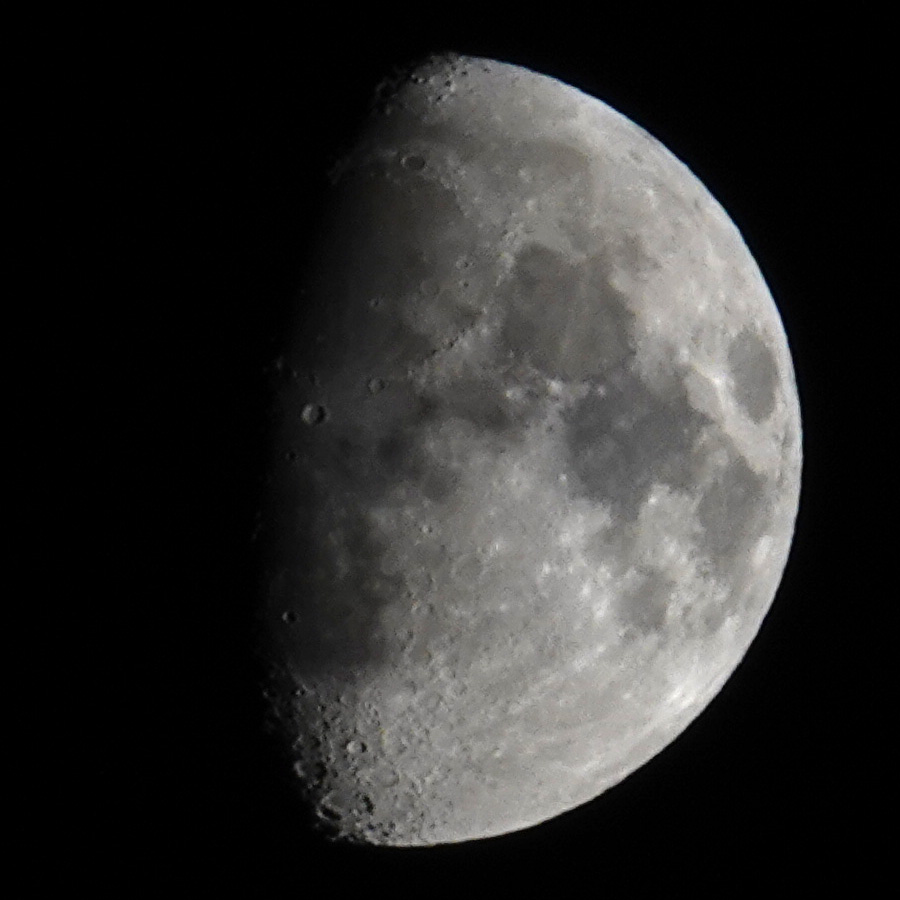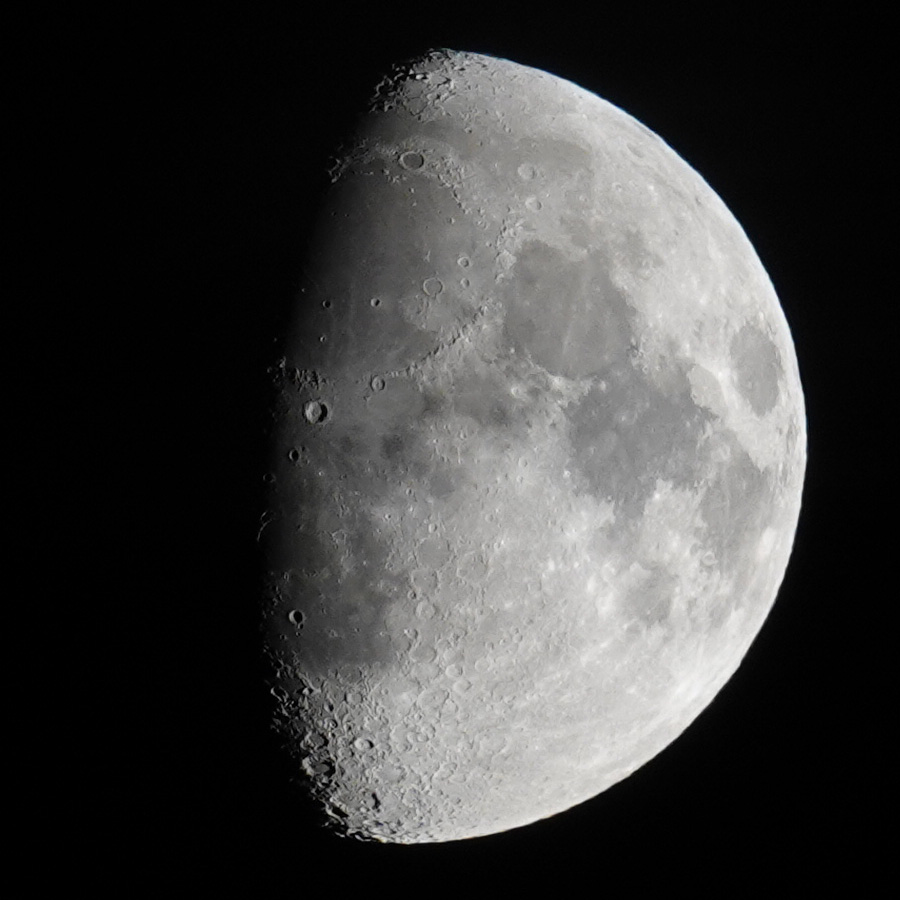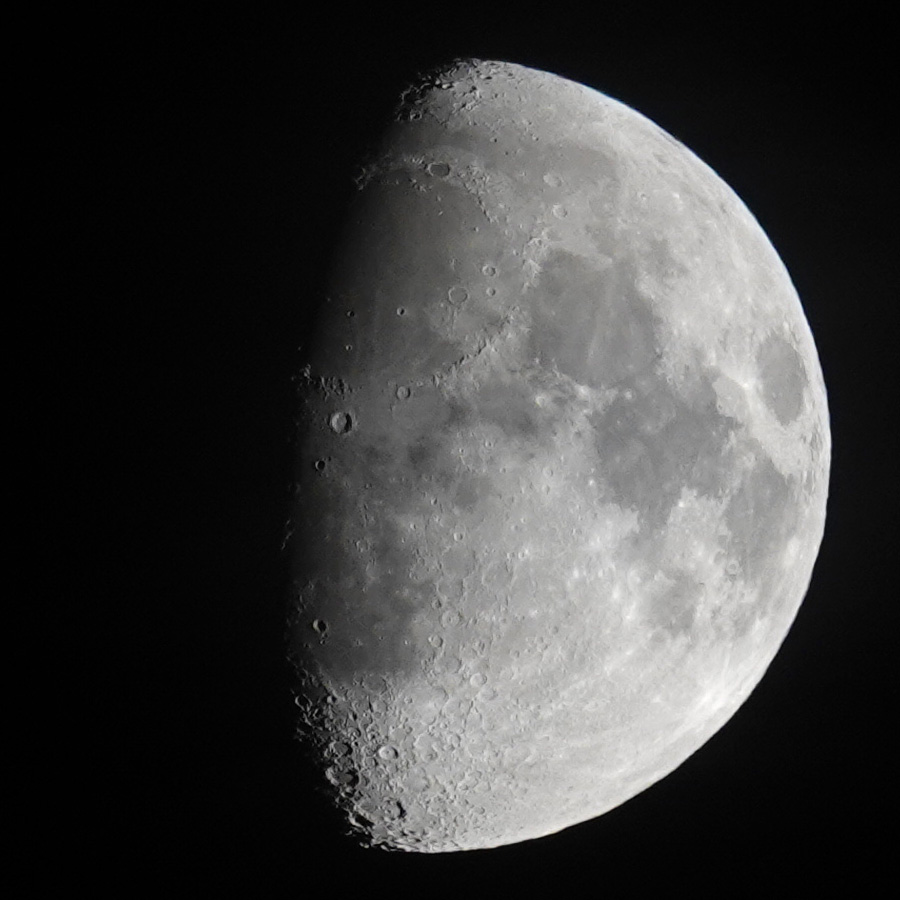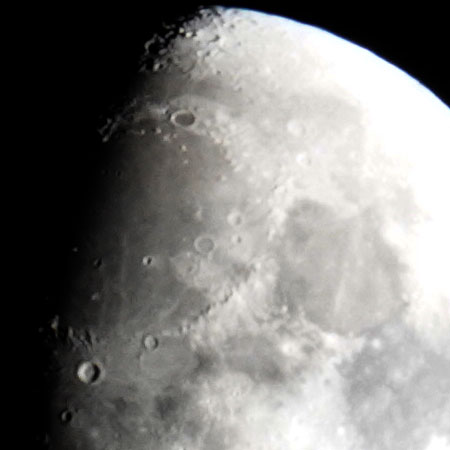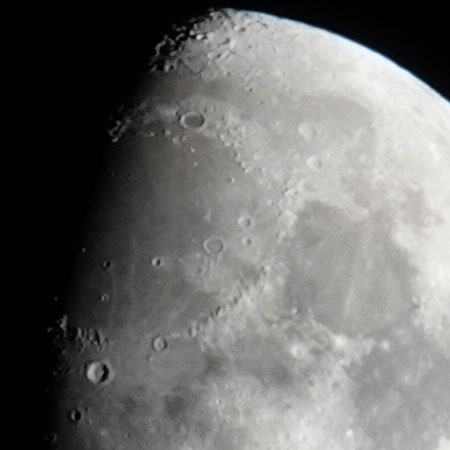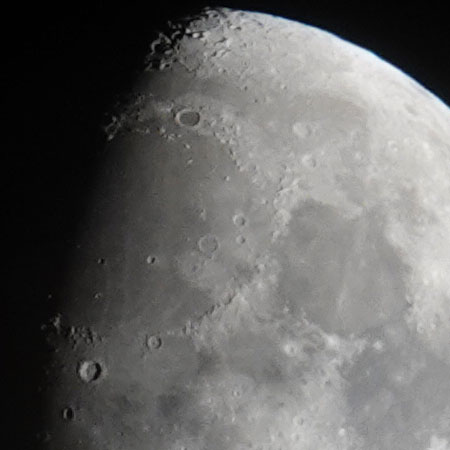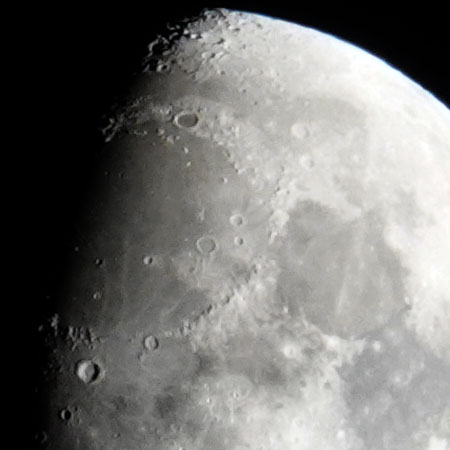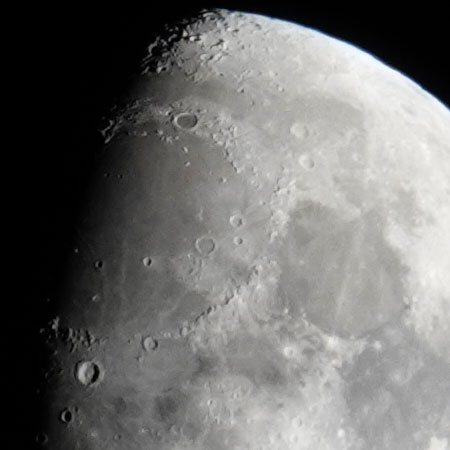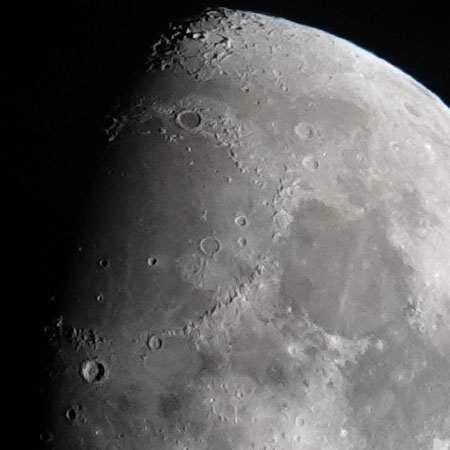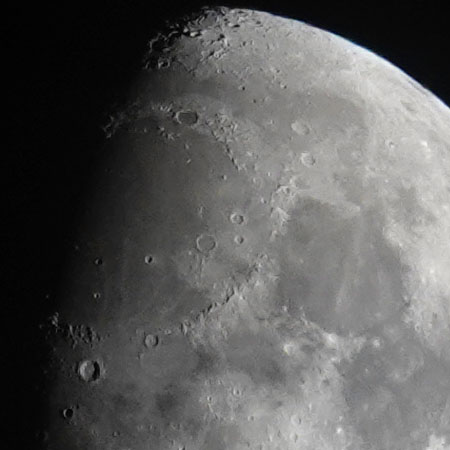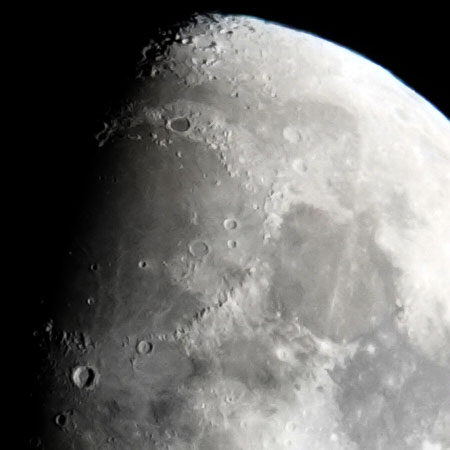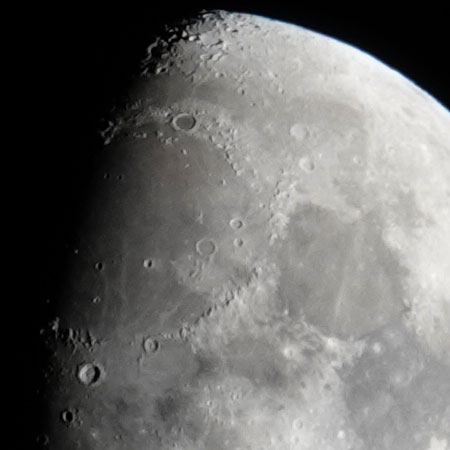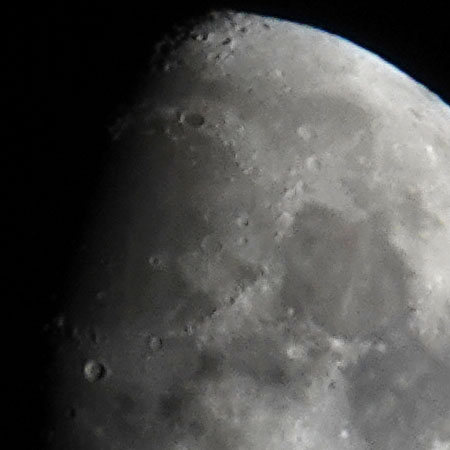Moon: Test Photos (Exposure, Aperture)
Recommendations for Moon Photos on the Internet | Test Photos | Photos of the Total Eclipse of the Moon | Discussion | References
On this page, I present test photos taken with the Sony RX10 M4. There are two questions here: (1) What exposure time is required for moon photos to be sharp? (2) How does the aperture value affect sharpness?
I came across these questions when taking photos of a total lunar eclipse. I noticed that the photos taken during the total phase were consistently blurry (not just mine), while photos taken towards the end of the eclipse showed the moon in sharp focus. During my research on the Internet, I did not find any really conclusive or consistent answers. That is why I am putting together my own, incomplete (!!!) ideas, which in the form shown only applies to the Sony RX10 M4 (with 1" sensor). For other cameras, the sensor size and focal length must be taken into account!
Recommendations for Moon Photos on the Internet
There are countless Websites on the Internet with recommendations on how to take good, sharp photos of the moon. For reasons of space, I do not want to go into detail here and publish only two links (see References). However, two often-cited "rules" caught my attention that I would like to disagree with, at least in part.
11 Rule
This rule states that you should set the aperture to f/11 and the exposure time to the reciprocal ISO value (i.e., 1/100s or 1/125s at ISO 100) for moon photos. It probably dates back to the days of full-frame cameras. In my experience, diffraction blurring already sets in at an aperture of f/5.6 (or even lower...) with small sensors. Ultimately, it is a "continuum" and a matter of personal taste as to which aperture value you consider diffraction blurring to be too strong. With the Sony RX10 M4, this continuum lies between f/5.6 and f/11 – and f/16 is actually out of the question (I only use this aperture for sun stars...). As I have found (see below), photos taken with aperture f/11 can still be acceptable depending on the subject.
This rule does not apply to lunar eclipses anyway, because the red moon is much too dark to obtain sufficiently exposed photos with an aperture of f/11.
The situation was slightly different for me when I wanted to try long exposure times (1/5s to 1/20s) with a "normal" moon in order to avoid motion blur. In some cases, because the moon was so bright, I had to set the aperture to f/11 to avoid overexposing the photos...
500 Rule
From www.focustoinfinity.de/tutorials/npf-regel (slightly modified):
The 500 rule is probably the best-known formula for determining the maximum exposure time for astrophotography. It states that the ideal shutter speed is calculated using the formula
- 500 / (focal length * crop factor).
This means that the focal length plays a decisive role in choosing the optimal exposure time.
The author's interim conclusion: This formula provides at least a rough guideline, but nothing more.
The value "500" alone has no scientific basis and is nothing more than a constant used in the calculation to obtain the most accurate approximation of the optimal shutter speed. There are also websites on the internet that refer to the 300, 400, and 600 rules, but none of them are any more accurate.
>> For my Sony RX10 M4, I get a value of 0.83s, or about one second. See "Speed of the Moon" to find out how far the moon moves in one second and what this means for the Sony RX10 M4.
Speed of the Moon, Image Scale
The moon completes a rotation of 360° in one day, i.e. in 24 hours, slightly "simplified." That are 15 arc minutes in one minute; the moon therefore proceeds one lunar width in two minutes. In one second, the moon moves 15 arc seconds further, in 1/5s it is 3", in 1/10s it is 1.5" and in 1/15s it is 1". This brings us to the range that small telescopes (4" = 10 cm) can resolve in terms of the resolving power and to the image scale of telescope/camera combinations.
For the Sony RX10 M4, I calculate the image scale using the formula 206.265 * 2.4 / 220 = 2.25 "/pixel when I use the actual focal length. Since I did not know whether this is correct, I measured the size of the moon in pixels in several photos and used this to determine the image scale. Depending on the photo, the moon varies in size (in pixels) because its angular size, which I do not know exactly, fluctuates between about 29' and 33' (average: 30'). Here are two examples:
- Size: 840 px = 30' (average assumed) >> 28 px/' >> 60"/28px = 2.14"/px
- Size: 870 px = 33' (largest value assumed) >> 26.3 px/' >> 60"/26.3px = 2.28 "/px
Even though this is only a rough estimate, it is clear that the actual focal length must be used. So 1/10s should be sufficient, and 1/20s or 1/30s will surely avoid motion blur. I will show corresponding photos below. In any case, these values are well below the one second specified by the 500 rule. Unfortunately, I cannot take test photos with an exposure time of 1s and an acceptable aperture value to prove that 1s is much too long.
Note: For the Vespera Pro I get: Size: 1140 px = 30' (average assumed) >> 38 px/' >> 60"/38px = 1.58"/px (1.65"/px according to formula)
How Do You Calculate the Exposure Time?
If the movement of the moon is allowed to be only exactly 1 pixel wide, you can use the rule of three to determine the maximum exposure time with the help of the moon's speed and the image scale (IS):
15" / 1s = IS / x >> x = IS / 15
Example Sony RX 10 M4: x = 2.25 / 15 = 0.15s = 1/6.67s, or about 1/7s.
Note: If you want to allow movement over more pixels, multiply the result by the number of pixels. You will get a longer maximum exposure time.
This means that with an exposure time of 1/5s, there might actually still be a slight motion blur. But presumably, limiting the movement to 1 pixel is a little too strict...
Test Photos
The following test photos were taken with the Sony RX10 M4. Since I did not have a clear idea of which elements may influence image sharpness, I varied the exposure times somewhat systematically, but the aperture rather randomly, whereby I was limited by the brightness of the moon (and the camera only "wanted" to set aperture to f/11 but not f/16).
Clicking on the following photos will bring up enlarged versions that show all the details as 1:1 crops. This is the only way to really evaluate the photos. Please enlarge and compare the photos at your see own will. I will only provide a very brief "interpretation" in " Discussion"...
|
Made brighter, 1/5s, f/11 |
Made brighter, 1/10s, f/11 |
|
1/20s, f/8 |
1/20s, f/16 |
|
Made brighter, 1/30s, f/16 |
Made brighter, 1/40s, f/5 |
|
Made brighter, 1/40s, f/16 |
Made brighter, 1/50s, f/8 |
|
Made brighter, 1/50s, f/16 |
Made brighter, 1/60s, f/11 |
|
1/125, f/5.6 |
Made brighter, 1/250s, f/4 |
Photos of the Total Eclipse of the Moon
On September 7, 2025, a total eclipse of the moon was once again visible in Germany - at least where the weather permitted. We observed and photographed the lunar eclipse from the Heiligenstein hill near Mühlhausen/Kraichgau (Sony RX10 M4 on a Sirui tripod).
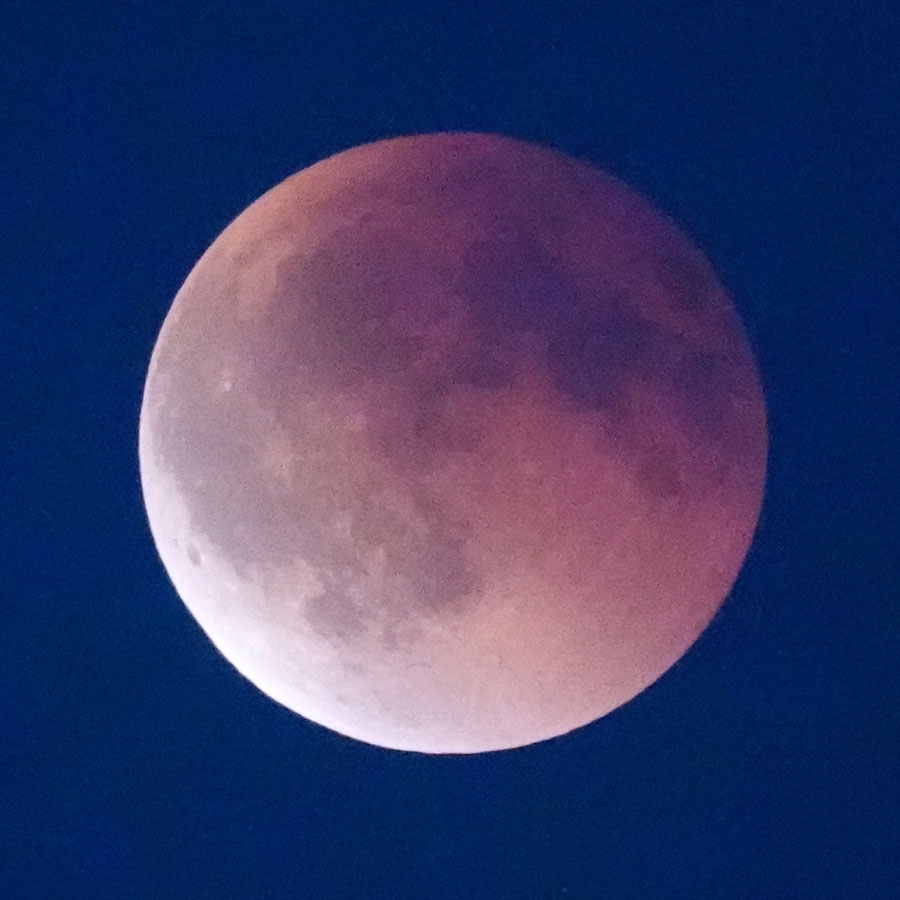 |
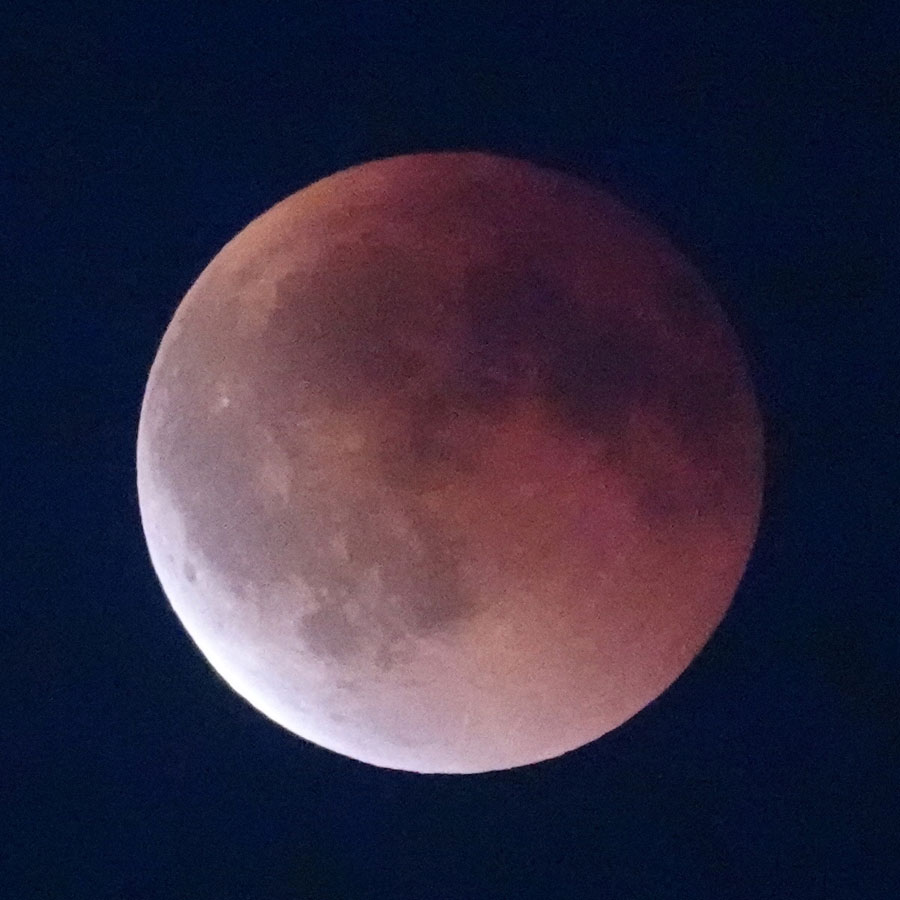 |
|
Photos taken at the end of the totality phase (at about 8:50 p.m.); 1/3s and 1/4s, f/4, ISO 6400 |
||
Shortly thereafter (just before 9 a.m.), the totality phase ended, and it became really bright in the lower left corner:
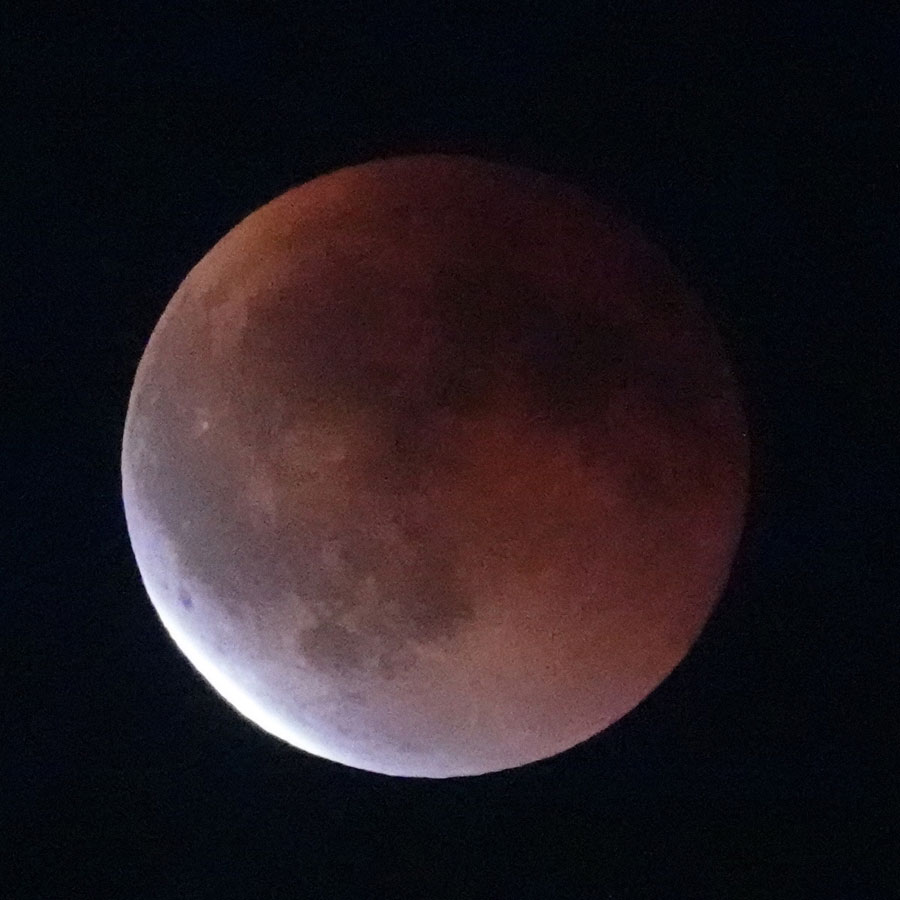 |
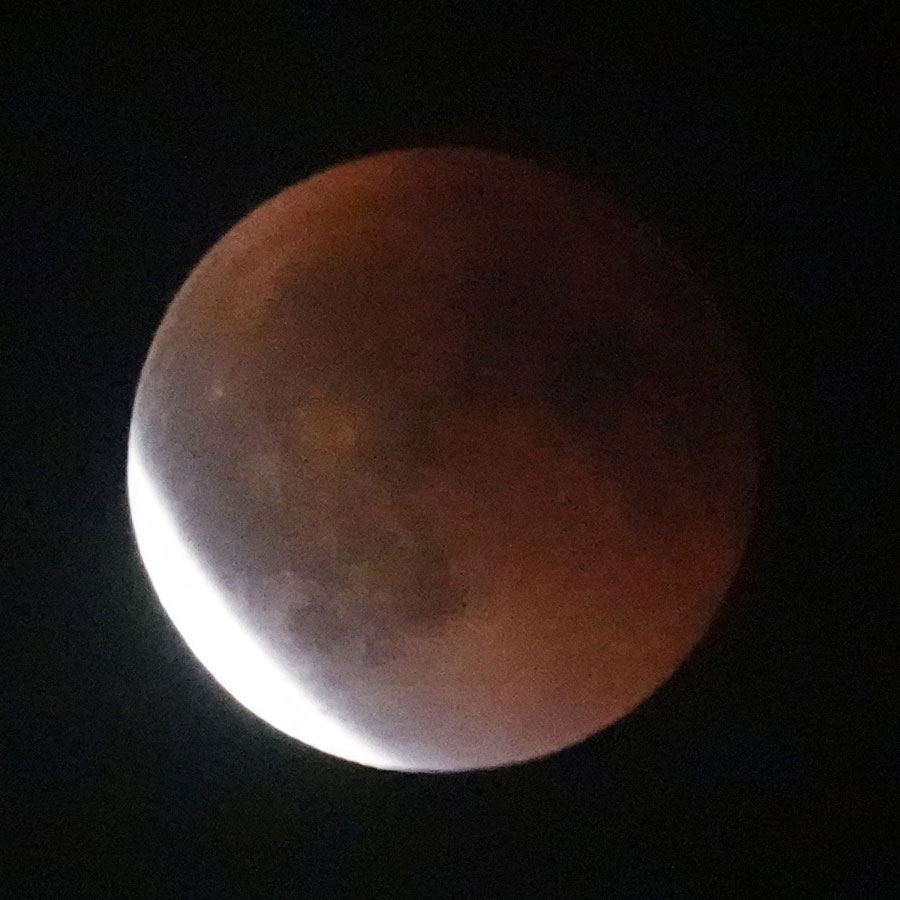 |
|
Photos taken at the beginning of the second partial phase (8:52, 857 p.m.); 1/10s and 1/20s, f/4, ISO 6400 |
||
A photo taken from our balcony a little later and a final one from 10 p.m., where you can hardly see anything "nibbled" anymore, but a little bit of darkening:
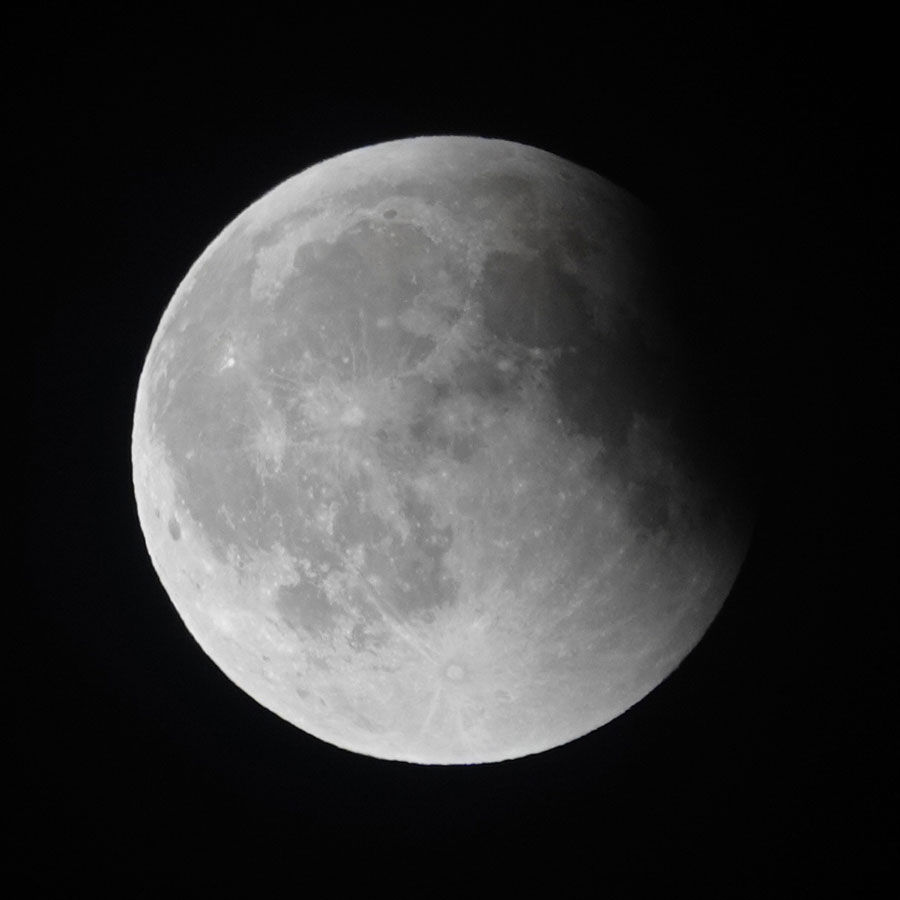 |
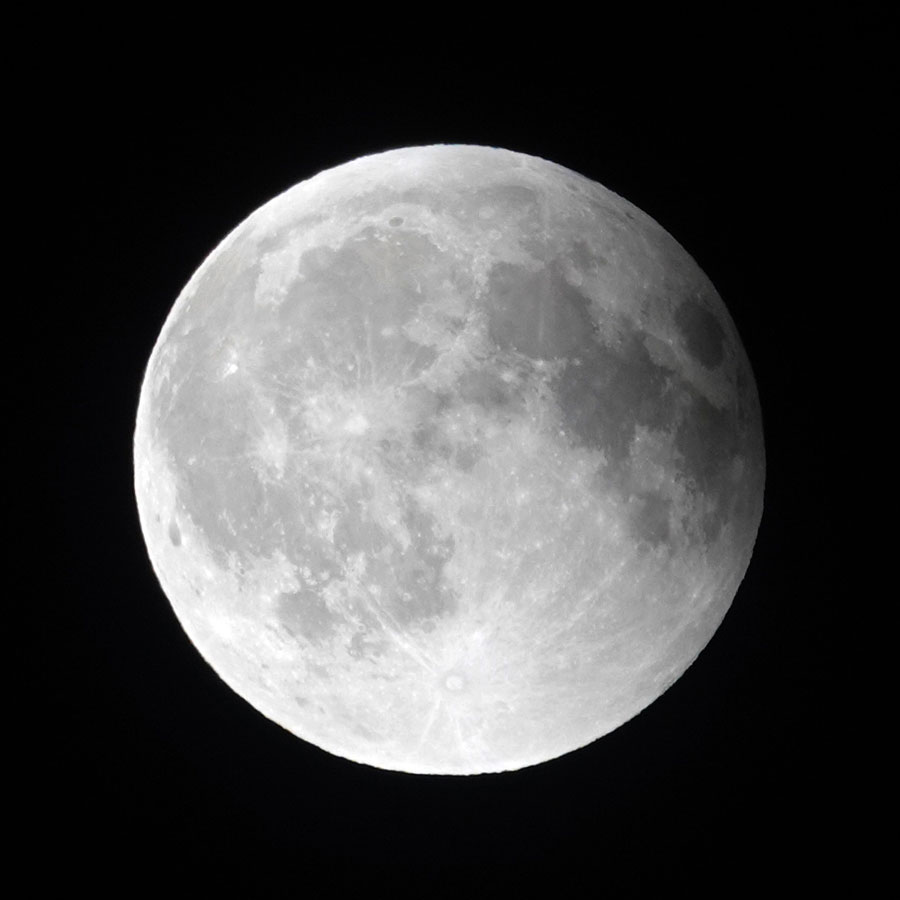 |
|
Photos taken at the end of the second partial phase (9:49, 10:00 p.m.) with 1/320s and f/4 - the moon appears sharp on these photos! |
||
Discussion
Motion Blur
From 1/20s, you can already see the Alps valley at f/8, so you get enough detail (whether you can see the Alps valley also depends on air turbulence, even at shorter exposure times). The photo with an exposure time of 1/5s is already so overexposed because I was not able to close the aperture further so that it is difficult to assess. At the same aperture of f/11, it is significantly more blurred compared with the photo taken at 1/10s. Motion blur may therefore still play a role here. However, I tend to believe that atmospheric turbulence (seeing) is the cause of the greater blurring in the 1/5s photo.
Below, I show sections from photos that were all taken with f/11 and are therefore roughly comparable (depending on air turbulence and possible fine vibrations, the images can vary greatly). The exposure times shown are just within the "critical" range (1/5s, 1/10s, 1/15s, and 1/25s; I only took 1/20s shots at f/8, f/9 and f/10, of which I am only showing f/8 and f/10). Depending on personal taste, the 1/20s photos may already be considered satisfactory (even though the sharpness improves slightly at even shorter exposure times - see the comparison photos at the end of the table).
|
Made brighter, 1/5s, f/11 |
Made brighter, 1/10s, f/11 |
|
Made brighter, 1/15, f/11 |
Made brighter, 1/25s, f/11 |
|
Made brighter, 1/20, f/10 |
Made brighter, 1/20s, f/8 |
|
Made brighter, 1/125, f/5.6, for comparison purposes |
Made brighter, 1/250, f/4, for comparison purposes |
I wondered why the photos with exposure times of 1/125s and 1/250s are significantly sharper than those with longer exposure times. Since it can hardly be due to motion blur caused by the moon's movement from expeosere times of 1/15s to 1/60s on, the only explanation I can think of is that the short exposure times "freeze" the air turbulence better. I can also see that there is air turbulence in photos with short exposure times, because they often show clear differences in detail. But they are sharp, while air turbulence "smears" the photos that are taken with longer exposure times.
In my opinion, the blurring shown here has nothing to do with motion blur, but rather with atmospheric turbulence (seeing), which becomes more "frozen" the shorter the exposure time. However, since atmospheric turbulence varies greatly, deviations can also occur, with photos taken with shorter exposure times being more blurred than those taken with longer exposure times.
Diffraction Blur
The photo taken at 1/20s and f/16 clearly shows the influence of diffraction blur, which can also be seen at shutter speeds around 1/50s (1/40s, 1/50s, 1/60s). Unfortunately, I did not take any photos with f/16 that were exposed for even shorter exposure times (they would probably have been too dark or required high ISO values).
Below, I show sections from photos that were taken with different aperture values and approximately comparable exposure times. Presumably due to air turbulence, the image appears somewhat inconsistent. In any case, aperture f/16 falls off significantly and is practically "unusable."
|
Made brighter, 1/40s, f/5 |
Made brighter, 1/20s, f/8 |
|
Made brighter, 1/20s, f/9 |
Made brighter, 1/20, f/10 |
|
Made brighter, 1/25s, f/11 |
Made brighter, 1/40s, f/16 |
Even though the photos may not clearly suggest this, I propose to choose apertures between f/4 and f/5.6 on the Sony RX10 M4 to avoid diffraction blur. This certainly also applies to many other cameras with smaller sensors. However, apertures of f/8 and f/10 still deliver acceptable results (especially with post-focusing), while aperture f/16 should be avoided at all costs. Unfortunately, I cannot judge whether the poor results for f/11...f/16 are due solely to diffraction blur or whether the autofocus also played a role (possibly inaccuracies due to insufficient light).
Exposure Time, Tripod versus handheld Shots
I got decent results on the tripod starting at 1/20s, but with a shorter exposure times (1/30...1/60s), the results got even better, maybe because the aperture could be opened wider. Shutter speeds of 1/125s and 1/250s already deliver very good results, especially since the aperture can then be wide open, as the RX10 M4 is optimized for open apertures. In addition, the moon is in the center of the image (900 pixels square), where the image quality is best. However, I often photograph the moon handheld and then select 1/500s or even 1/1000s as the exposure time to rule out possible "shake" and "blur" effects.
Caution: When shooting with a tripod, it is essential to switch off the image stabilizer (in this case: the Sony SteadyShot). This is generally recommended, but of course I always forget to switch it off - apparently without any negative effect ;)
Conclusion from the Fhotos
While my test shots show that small apertures reduce sharpness, with f/16 on the Sony RX10 M4 even catastrophically so, they do not show at the exposure times used, whether motion blur might play a role. In my opinion, they rather show that air turbulence (seeing) makes the photos blurrier the longer the exposure time is. But even the blurring caused by air turbulence is far from what photos of the lunar eclipse with a blood moon show. So for me, the question posed at the beginning remains unanswered.
Recommendation for Normal Moon Photos
All in all , I recommend short exposure times (1/125s-1/1000s, depending on whether you are using a tripod or shooting handheld and other parameters), the widest possible aperture (f4-f/5.6), and low ISO values (ISO 100-200; maximum ISO 800-1600).
Caution: When shooting with a tripod, it is essential to switch off the image stabilizer (in this case: the Sony SteadyShot).
Lunar Eclipse, Red Moon at Moonrise
In these cases, the moon is so dark that exposure times in the range of 1/3s to 1/15s are necessary, even with a wide aperture and high ISO setting. This means that motion blur can play a role, while diffraction blur should not be relevant. Air turbulence (seeing) should also play a role, but it is unclear to me how strong its effect is.
However, the photos that I took (see above) and those I have seen from others show such blurred moon structures that cannot be explained by motion blur and air turbulence (seeing) alone. Certainly, the (high) ISO value plays a role, but even that does not explain the extent of the blurring observed.
My naive explanation would be that the blurring is due to the sensor not receiving enough light. Perhaps it is also due to the color red, to which the sensor may be less sensitive... Of course, the autofocus could also be off under these conditions and simply not focus; but many photographers certainly focused their photos of the lunar eclipse manually...
In other words, I have no explanation for the blurriness observed in the lunar eclipse photos - and actually, no one has ever really addressed this issue. Only blurry photos have been and continue to be published, and the photographers (including myself) were very happy with them ;) Strange...
Update: I have now found a Website that shows sharp photos of the lunar eclipse. The camera sits on an EQ tracking mount, and long exposure times are used (which contradicts my "hypothesis" of atmospheric turbulence...).
References
- Moon (Wikipedia): en.wikipedia.org/wiki/Moon
- Mond fotografieren: www.digitipps.ch/fotopraxis/mond-fotografieren/ (in German)
- How to Photograph a Lunar Eclipse: photographylife.com/how-to-photograph-a-lunar-eclipse
| 07.10.2025 |
